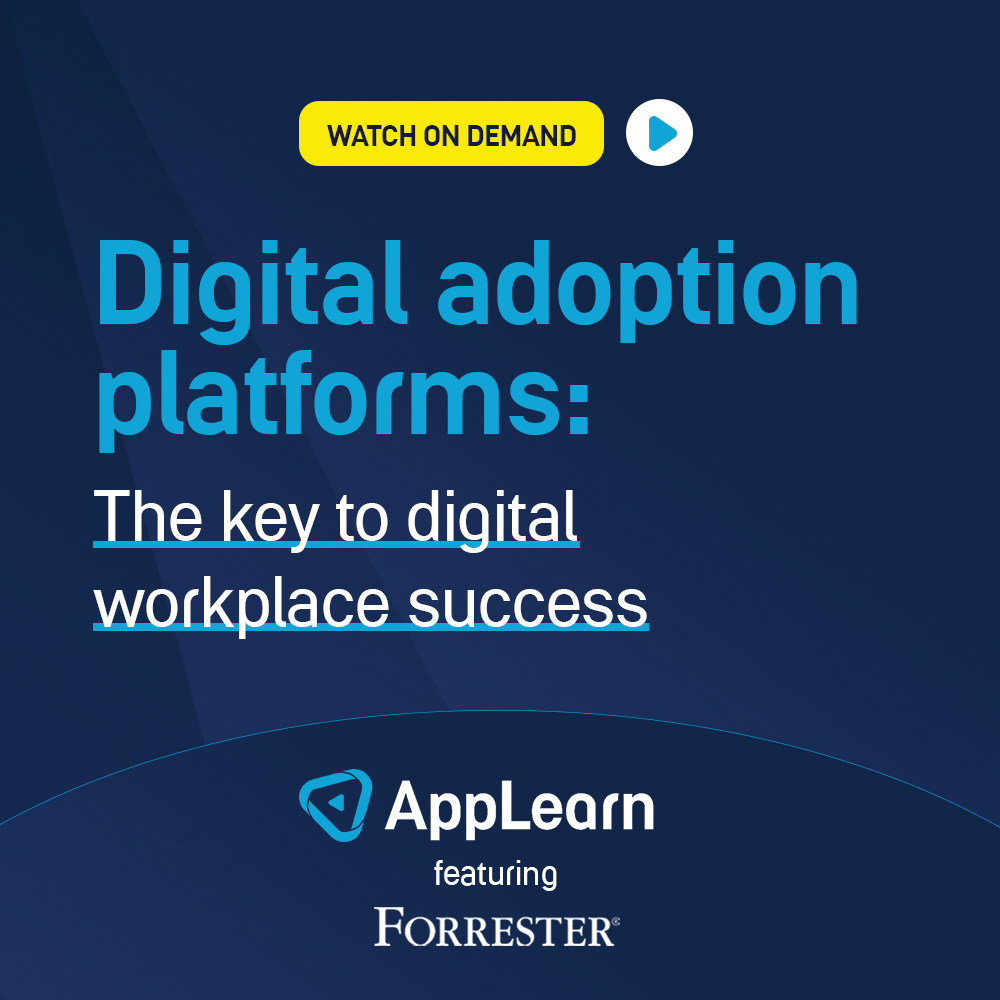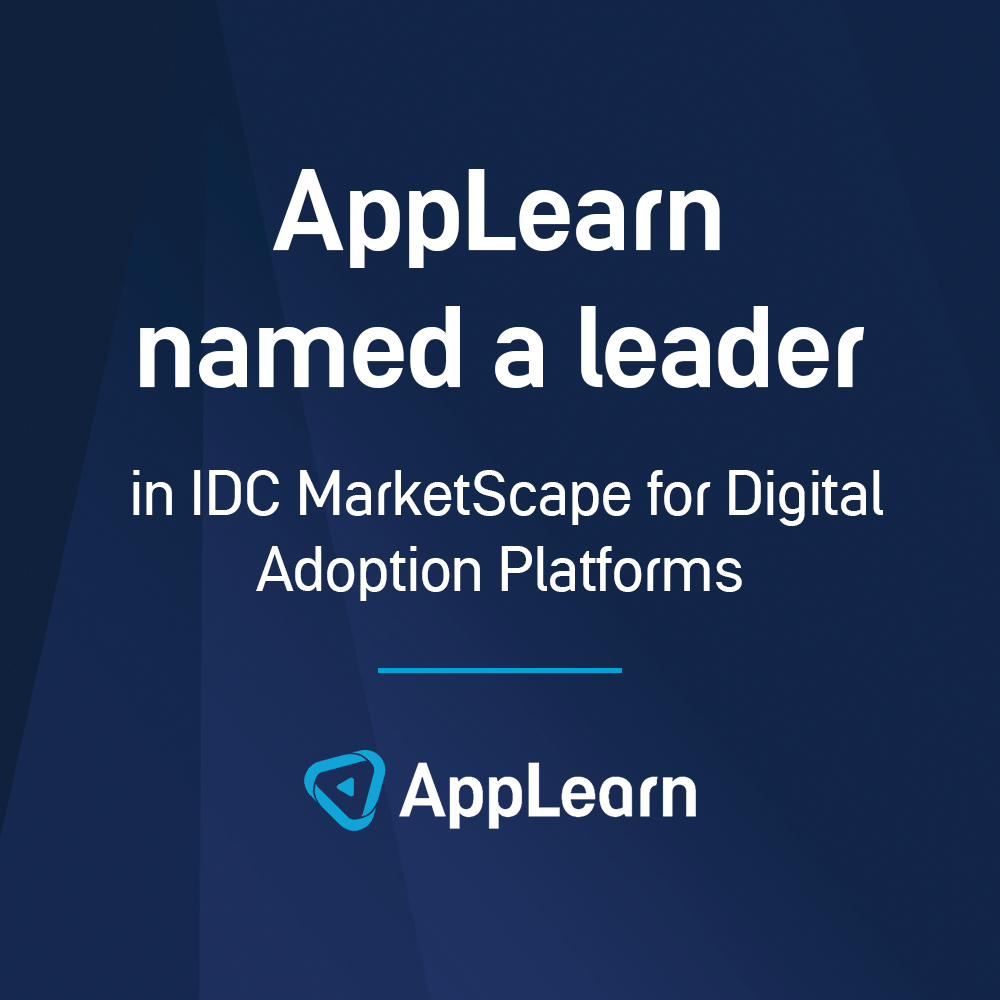News
Predicting the digital workplace of 2024
Predicting the digital workplace of 2024
How do you predict the future for the world of work amidst the backdrop of economic uncertainty and a rapidly changing landscape of technology?
It’s a difficult question to answer, but a good place to start is by asking those who are living and breathing the topic on a daily basis.
In a recent AppLearn roundtable, we gathered digital leaders and covered the topic of the digital workplace and navigating the path of employee experience in the world of hybrid and distributed workforces.
We’ve taken a look at what are the most defined, developed and adopted parts of the digital workplace now, what the basic needs and aspirations are for the year ahead, and the key challenges to overcome to ensure businesses are meeting the objectives of this critical area.
Our discussion touched on the major areas of interest for 2024 backed up with a set of anonymous polls undertaken throughout the roundtable. They uncovered the growing role of adoption of advanced technologies such as automation and AI in the workspace; an increased focus on employee well-being; the continued rise and navigation of remote and hybrid work models; and the ability to self-serve and enhance accessibility and usability for employees.
As we prepare for 2024 and engage in discussions with CIOs and digital workplace teams, we want to understand how these key shifts will unfold in 2024.
The defined, developed and adopted parts of the digital workplace
While businesses move at different paces and have their own unique objectives, it was interesting to understand the baseline position of the parts of the digital workplace that are defined and working now.
In 2024, these businesses will be building on their digital environments that connect distributed teams. Workplaces now transcend geographical barriers, meaning leveraging cutting-edge technology for seamless collaboration and communication have to be commonplace. It also means the tools that support remote work, virtual meetings, and project management are not just well-integrated but are tailored to enhance team cohesion and productivity across different locations.
Unprecedented emphasis has also been placed on human-centric design. It’s the focus on implementing digital tools and workflows that are crafted with a deep understanding of employee needs and behaviors, promoting a more intuitive and engaging work experience. It’s an area with multiple benefits, prioritizing employee well-being and efficiency, leading to higher job satisfaction and performance.
It's a key reason why digital adoption platforms (DAPs) have emerged as a powerful and increasingly widespread solution – a single interface that links application estates across a simple support experience.
However, one of the most prominent discussion topics has been embedding a strong, positive culture within the digital workplace. Organizations have recognized that culture is not confined to physical spaces. Businesses are realizing that frustration-free remote working can impact culture positively. Our delegates showed that through virtual team-building activities, open communication channels, and shared digital experiences, companies are successfully fostering a sense of belonging and community among employees, irrespective of where they are located for work.
Looking ahead: Envisioning the ideal digital employee experience in 2024
With a baseline in place, what does the ideal digital employee experience look like for 2024?
To the digital leaders we spoke with, it was an embodiment of simplicity, user experience (UX), personalization, seamlessness, and adaptability, all designed to accommodate the needs of a distributed workforce. Achieving these ideals requires a delicate balance between current capabilities and aspirational advancements.
In 2024, employees should be effortlessly navigating a digital landscape that prioritizes user experience. Interfaces are intuitive, and applications are designed with the end-user in mind. This simplicity extends to onboarding, training, and daily tasks, reducing friction and boosting efficiency.
Supporting that needs to be systems and processes that are designed to offer personalized experiences tailored to individual preferences and needs. It’s a frictionless experience with minimal obstacles in accessing information, collaborating with colleagues, and completing tasks, making work feel more like a smooth journey than an uphill climb. And it's underpinned with robust communication tools, high-speed internet, and cloud-based platforms that erase the geographical barriers that once defined the workplace.
And while it was more aspiration than immediate requirement, the growing role of AI and automation raised its head. It’s an area our roundtable believed that holds immense promise. Anything from AI-driven support to predictive analytics streamlining decision-making. Organizations strive to harness the full potential of AI and automation to make work smarter, not just more straightforward.
The key challenges to overcome in achieving an ideal digital workplace in 2024
Contributors understood that achieving the ideal digital employee experience is an ongoing journey, requiring a commitment to embracing emerging technologies and adapting to changing workforce dynamics. In 2024, the workplace isn't just a physical location; it's a digital realm where simplicity, personalization, and seamlessness converge to create a workspace that inspires employees to reach their full potential.
However, businesses face a myriad of challenges that can hinder their progress. These challenges encompass a range of factors, from organizational culture to technical limitations. Understanding and addressing these hurdles is essential for a successful digital workplace transformation.
Our roundtable highlighted their main barriers:
Finding time to focus: The relentless pace of business operations often leaves little room for planning and implementing digital workplace initiatives. With leaders and employees juggling multiple priorities, allocating time and resources to focus on digital transformation can be a significant challenge.
Accessibility, IT literacy, and time: Not all employees possess equal access to digital tools, and some may lack the necessary IT literacy skills to navigate them effectively. Bridging these gaps through training and support is vital, but it can be a time-consuming endeavor.
Change resistance: One of the most formidable obstacles in achieving the ideal digital workplace is resistance to change. People naturally resist disruptions to their routines, especially when it involves adopting new technologies and workflows. Convincing employees to embrace these changes requires effective change management strategies.
Security of personal data: As digital workplaces become more prevalent, concerns about the security of personal data rise. Organizations must prioritize robust data security measures and transparent communication to alleviate these fears and build trust among employees and stakeholders.
Email culture: The entrenched culture of relying on email as the primary mode of communication can hinder collaboration and slow down the adoption of more efficient digital workplace communication tools and platforms. Breaking away from this email-centric mindset is a crucial step forward.
Too many IT departments: In larger organizations, the existence of multiple IT departments or fragmented IT structures can lead to inefficiencies and conflicting priorities in digital workplace initiatives. Streamlining IT operations and fostering collaboration across teams is imperative.
Varied levels of connectivity, different collaboration cultures across the world: Global organizations often grapple with the challenge of creating a consistent digital workplace experience. Varying levels of connectivity and cultural differences in collaboration practices across different regions can complicate efforts to standardize digital workflows.
Lack of resources (time, skilled talent, money): Resource constraints, including time limitations, a shortage of skilled talent, and budget restrictions, can impede digital workplace projects. To overcome these barriers, businesses must allocate resources judiciously and seek innovative solutions.
White glove expectations: High expectations for a seamless digital workplace experience can create pressure on businesses to deliver sophisticated solutions. Striking a balance between meeting user expectations and managing project scope is a delicate task.
Budget: Adequate funding is the lifeblood of digital workplace transformation. Without the necessary budget to invest in technology, training, and infrastructure, businesses may find it challenging to realize their ideal digital workplace vision.
Making the digital employee experience a reality in 2024
In 2024, it's clear that offering a great digital experience for employees isn't just a nice-to-have; it's essential. While many have made progress, there's much to do, especially in areas like integrating different systems, designing user-friendly tools, using feedback to improve, supporting both in-office and remote work, and measuring impact on ROI.
Our top tips to make this a reality:
Maximize digital adoption platforms (DAPs)
Digital transformation is a big deal right now, and getting new and current employees up to speed with digital tools is crucial. There's a lot of potential here for businesses to make a quick impact, or conversely be left behind.
In its Market Guide for gigital adoption platforms (2022), Gartner said, "Organizations seeking to accelerate digital transformation must enable employees to adopt new and changing technology easily. Application leaders should examine digital adoption platform providers that enable employees or customers to better adopt technology and perform at a higher level."
They provide ongoing support and learning, helping employees understand and use digital tools better. This leads to better productivity, more use of digital tools, reduced support costs, and an overall better digital experience.
From an onboarding perspective it helps new hires get comfortable with the digital tools they'll use, boosting their confidence and productivity from the start.
Focusing on these areas can give businesses a big return on investment. It not only improves the employee experience but also makes the digital workplace more efficient and effective.
Proactively manage the digital employee experience (DEX)
In the digital age, the lines between customer experience (CX) and employee experience (EX) are blurring. A better EX leads to better customer satisfaction and loyalty.
In AppLearn’s Hidden Cost of the Digital Employee Experience (research looking into the in-application behavior of 1 million users), 58% of employees said the number of business applications they use has increased since March 2020. Furthermore, 76% reported using them for up to six hours a day.
As few employees can handle every application with expertise, it's easy to see how so many hours of productivity can be lost. Moreover, why one in five employees expressed that they have become more frustrated with business applications.
You may have an amazing culture, but operational activities can negate that fairly quickly. It’s why we’re seeing the rise of the digital employee experience leader (DEX), and why the likes of Gartner are advocating the role - putting greater focus in boardrooms that lack digital literacy, and ensuring that digital environments put employees at the center, creating a human experience that steers individuals, teams, and, ultimately, the business to successful outcomes.
Unleash actionable insights
In today's data-driven world the intelligent mining and delivery of data are key for business success.
It can be employee experience and insights, or data mining from your systems and applications.
This process involves not just repackaging information but contextualizing it for specific business needs, often using it for delivery and decision-making. This approach fosters a data-driven culture, enhancing operations and identifying new opportunities.
Crucial to this is 'adoption data', which tracks user interactions within software, providing insights for optimizing applications and technology investments. Effectively leveraging this data significantly boosts user engagement and business improvement, demonstrating the importance of actively using data for strategic decisions.
Maximize results with hybrid work
As we adjust to more distributed organizations, we're learning from early attempts at hybrid work. The goal is to balance remote and office work for both productivity and well-being.
One challenge is keeping a strong, inclusive culture in a hybrid environment. Technologies that create virtual "water cooler" moments and maintain regular team communication are key. Empathy and understanding are crucial in leading remote teams. Tools for visual collaboration are becoming increasingly important.
Another issue is managing productivity and work-life balance. In a hybrid setup, it's easy for these lines to blur, leading to burnout. Setting clear boundaries and offering flexibility, along with using tools for project management and productivity tracking, can help.
The well-being of employees is also a priority. We need strong wellness programs and mental health support. A well-managed hybrid model can attract and keep top talent, reduce costs, and encourage innovation.
The challenges are there, but the rewards of adapting to a hybrid work model and leveraging technology are significant.
Final thoughts
With the intelligent integration of automation and data analytics enhancing decision-making and streamlining tasks, it's essential to equip employees with the necessary tools and, importantly, the liberty to concentrate on more strategic and impactful activities.
There's a strong focus on promoting employee wellbeing, a key factor in retaining staff, which intersects with the challenge of effectively supporting and optimizing new, partially unexplored remote and hybrid work models. This situation calls for a greater emphasis on creating work environments that are inclusive and adaptable, recognizing that, even after nearly four years, we are still in the process of fully realizing these goals.
These progressive changes are pivotal in empowering staff, elevating productivity, and fostering a culture that values innovation and resilience among those who adopt them.
As we move into the next year, it's crucial for both leaders and employees to keep an open mind, embrace change, and continue learning. The future of work in 2024 is brimming with exciting possibilities and potential, despite its inherent uncertainties.

Digital adoption platforms: The key to digital workplace success
In our recent webinar with guest speaker Vasupradha Srinivasan, Principal Analyst at Forrester, we illustrate the reasons and benefits of building a center of excellence (CoE) around digital adoption platforms (DAP) and explore best practices and clear terms for digital workplace success.
Article by
Adam McVey
Share this article





